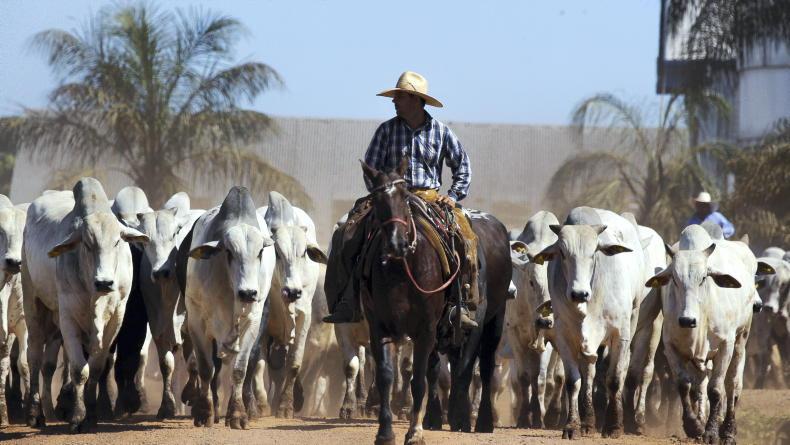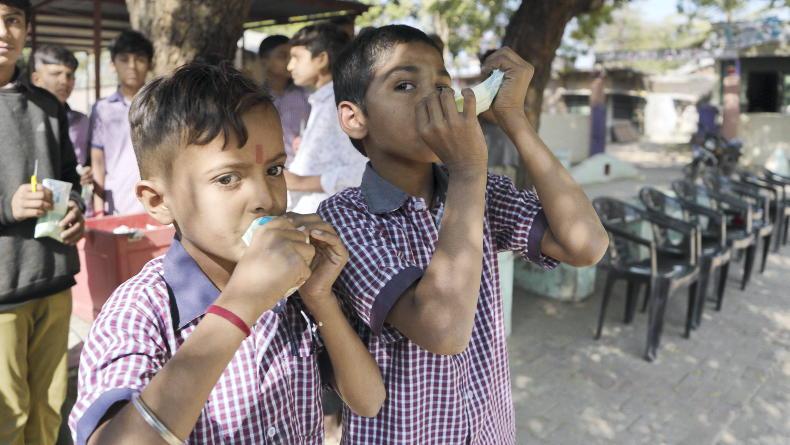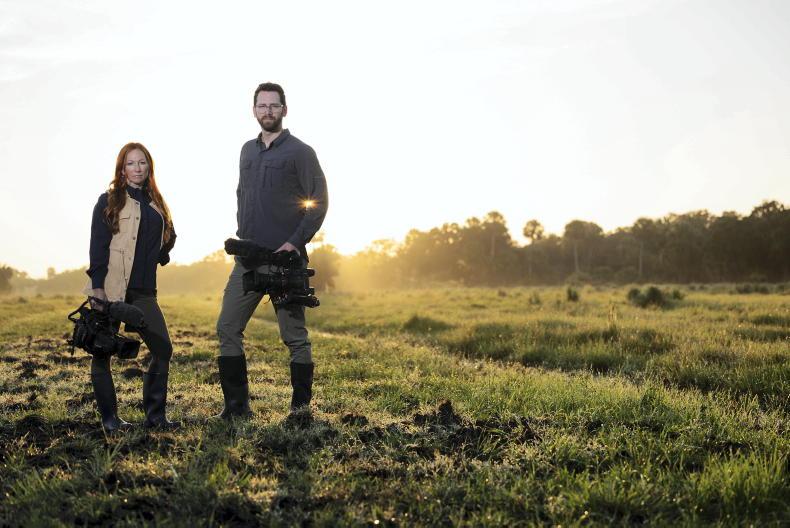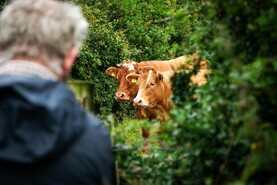A new feature-length documentary that examines what the world would look like if there were no cows was screened for the first time in Ireland last week.
World Without Cows was commissioned by Alltech CEO Dr Mark Lyons, with the aim of examining, in the context of climate change, how the planet would be affected if there were no bovines emitting potent methane into the atmosphere.
The documentary was filmed in the US, Brazil, Chile, Germany, India, Kenya, the Netherlands, Singapore and the UK over two years. The production values are high, with videography akin to National Geographic.

World Without Cows was filmed in over 40 locations, including ranches in Brazil and Chile. \ Alltech
The 90-minute production takes viewers on a trip around the world that brings into sharp focus how the developing world is dependent on cows for its survival in a primal way that European economies have left long behind them.
A segment on the Maasai tribe in Kenya highlights how a person’s wealth is linked to the number of cows they own.
One farmer recounts how his children’s education costs 200 Kenyan shillings each term, and all of that money comes from his cows.
Every part of the cow’s body is used by the tribe, from milk to meat, bones and horns for utensils and hide for leather and even dung for construction of walls in their huts.

India accounts for more than half of all the world’s malnourished children and school milk programmes are trying to address this. \ Alltech
In India, the focus is on the sheer number of cows, their key role in improving the population’s dietary deficiencies and the problems their status as a sacred animal causes.
Cow shelters
There are over 300m bovines in India and when cows are no longer useful for milk production, they join their male counterparts in being turned loose by their owners to wander the highways and byways destroying crops and foraging for scraps. A minority are taken to live in cow shelters called gaushalas.
The documentary tells us that there are 189m malnourished people in India and milk in their diet is a key way to address this.

Soil degradation and feedlot beef production are tackled in segments on ranches in Florida, Brazil and Chile. \ Alltech
India accounts for more than half of all the world’s malnourished children, while the country’s National Family Health Survey 2015-16 found that 38% of children aged under five are stunted.
Government programmes that distribute milk to all students aim to address this malnutrition.
Against this backdrop, Jack Bobo, director of the Food Systems Institute at University of Nottingham, makes the point that the next 30 years are “the most important period in history” when it comes to ensuring there is enough food for the growing population.
The developing world will have more people who will need more food, he warns.
Bobo is just one of a number of experts drafted into the documentary, and Dr Frank Mitloehner from University of California is no stranger to Irish farmers.
His thesis is that cows do what we as humans can never do – convert indigestible cellulose into nutrient-dense meat and milk. He also explains the cyclical nature of methane emissions.

The film makers Brandon Whitworth and Michelle Michael examine the arguments for and against reducing meat in the diet in favour of a plant-based diet. \ Alltech
The film makers, Brandon Whitworth and Michelle Michael, examine the arguments for and against reducing meat in the diet in favour of a plant-based diet.
They address the surge in cattle production in south America, with its resulting destruction of the Amazon rainforest.
Soil degradation and feedlot beef production on a scale unimaginable in Ireland are tackled in segments on ranches in Florida, Brazil and Chile.
The calculation of methane’s global warming potential (GWP100) and the alternative GWP* calculation also feature.
Growing global population
A key trend throughout the 90 minutes is the growing global population and the need to be able to feed millions more people in the coming years.
The United Nations says the world’s population is expected to increase by almost 2bn people in the next 30 years, to 9.7bn in 2050.
Overall, the documentary touches on many points that I believe farmers in Ireland and around the world will welcome with open arms, and does so in a very slick mix of science and rich imagery.
“At last, someone is telling our side” is the comment that I imagine many farmers will make when they see the production.
The downside is that, regardless of its merits, the documentary runs the risk of being dismissed out of hand by some people as “propaganda from the big ag lobby”.
Alltech CEO Mark Lyons has hinted that the documentary could eventually appear on streaming services such as Netflix, but in the short term, he wants feedback from the agricultural industry about how it feels the message of World Without Cows can be best heard outside of the industry.
If you get the opportunity to watch it, it’s well worth your time.
A new feature-length documentary that examines what the world would look like if there were no cows was screened for the first time in Ireland last week.
World Without Cows was commissioned by Alltech CEO Dr Mark Lyons, with the aim of examining, in the context of climate change, how the planet would be affected if there were no bovines emitting potent methane into the atmosphere.
The documentary was filmed in the US, Brazil, Chile, Germany, India, Kenya, the Netherlands, Singapore and the UK over two years. The production values are high, with videography akin to National Geographic.

World Without Cows was filmed in over 40 locations, including ranches in Brazil and Chile. \ Alltech
The 90-minute production takes viewers on a trip around the world that brings into sharp focus how the developing world is dependent on cows for its survival in a primal way that European economies have left long behind them.
A segment on the Maasai tribe in Kenya highlights how a person’s wealth is linked to the number of cows they own.
One farmer recounts how his children’s education costs 200 Kenyan shillings each term, and all of that money comes from his cows.
Every part of the cow’s body is used by the tribe, from milk to meat, bones and horns for utensils and hide for leather and even dung for construction of walls in their huts.

India accounts for more than half of all the world’s malnourished children and school milk programmes are trying to address this. \ Alltech
In India, the focus is on the sheer number of cows, their key role in improving the population’s dietary deficiencies and the problems their status as a sacred animal causes.
Cow shelters
There are over 300m bovines in India and when cows are no longer useful for milk production, they join their male counterparts in being turned loose by their owners to wander the highways and byways destroying crops and foraging for scraps. A minority are taken to live in cow shelters called gaushalas.
The documentary tells us that there are 189m malnourished people in India and milk in their diet is a key way to address this.

Soil degradation and feedlot beef production are tackled in segments on ranches in Florida, Brazil and Chile. \ Alltech
India accounts for more than half of all the world’s malnourished children, while the country’s National Family Health Survey 2015-16 found that 38% of children aged under five are stunted.
Government programmes that distribute milk to all students aim to address this malnutrition.
Against this backdrop, Jack Bobo, director of the Food Systems Institute at University of Nottingham, makes the point that the next 30 years are “the most important period in history” when it comes to ensuring there is enough food for the growing population.
The developing world will have more people who will need more food, he warns.
Bobo is just one of a number of experts drafted into the documentary, and Dr Frank Mitloehner from University of California is no stranger to Irish farmers.
His thesis is that cows do what we as humans can never do – convert indigestible cellulose into nutrient-dense meat and milk. He also explains the cyclical nature of methane emissions.

The film makers Brandon Whitworth and Michelle Michael examine the arguments for and against reducing meat in the diet in favour of a plant-based diet. \ Alltech
The film makers, Brandon Whitworth and Michelle Michael, examine the arguments for and against reducing meat in the diet in favour of a plant-based diet.
They address the surge in cattle production in south America, with its resulting destruction of the Amazon rainforest.
Soil degradation and feedlot beef production on a scale unimaginable in Ireland are tackled in segments on ranches in Florida, Brazil and Chile.
The calculation of methane’s global warming potential (GWP100) and the alternative GWP* calculation also feature.
Growing global population
A key trend throughout the 90 minutes is the growing global population and the need to be able to feed millions more people in the coming years.
The United Nations says the world’s population is expected to increase by almost 2bn people in the next 30 years, to 9.7bn in 2050.
Overall, the documentary touches on many points that I believe farmers in Ireland and around the world will welcome with open arms, and does so in a very slick mix of science and rich imagery.
“At last, someone is telling our side” is the comment that I imagine many farmers will make when they see the production.
The downside is that, regardless of its merits, the documentary runs the risk of being dismissed out of hand by some people as “propaganda from the big ag lobby”.
Alltech CEO Mark Lyons has hinted that the documentary could eventually appear on streaming services such as Netflix, but in the short term, he wants feedback from the agricultural industry about how it feels the message of World Without Cows can be best heard outside of the industry.
If you get the opportunity to watch it, it’s well worth your time.










 This is a subscriber-only article
This is a subscriber-only article










SHARING OPTIONS: